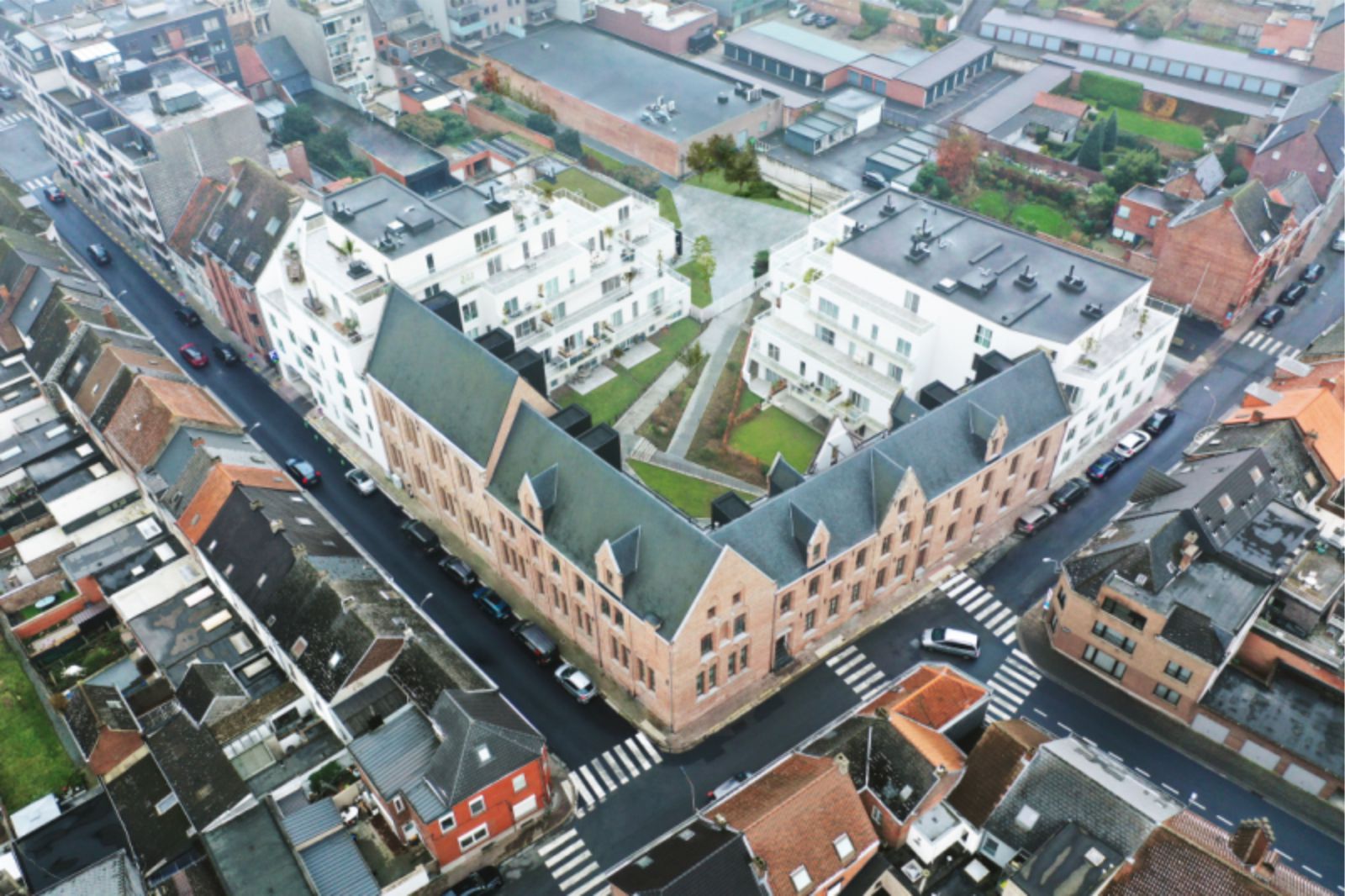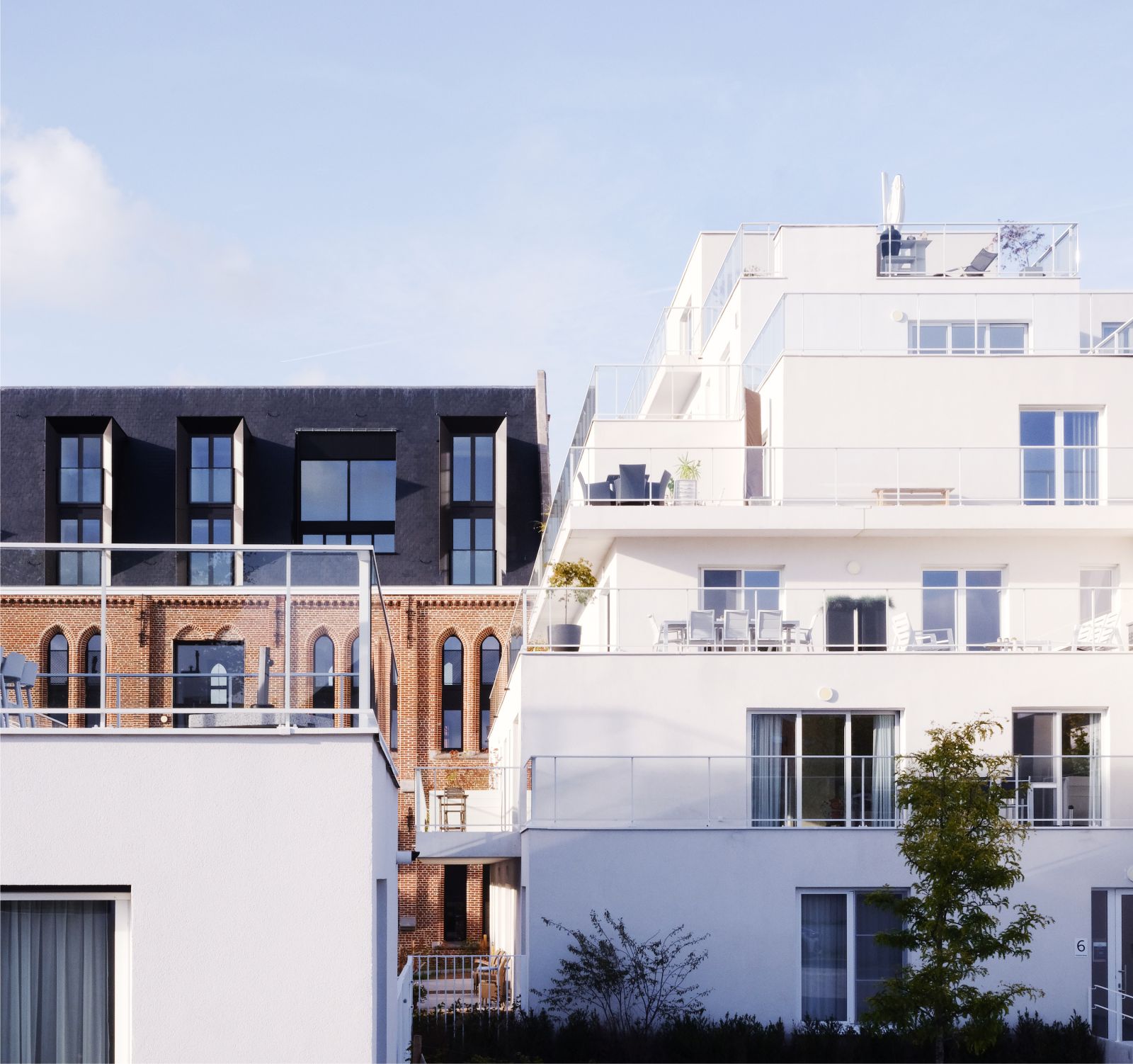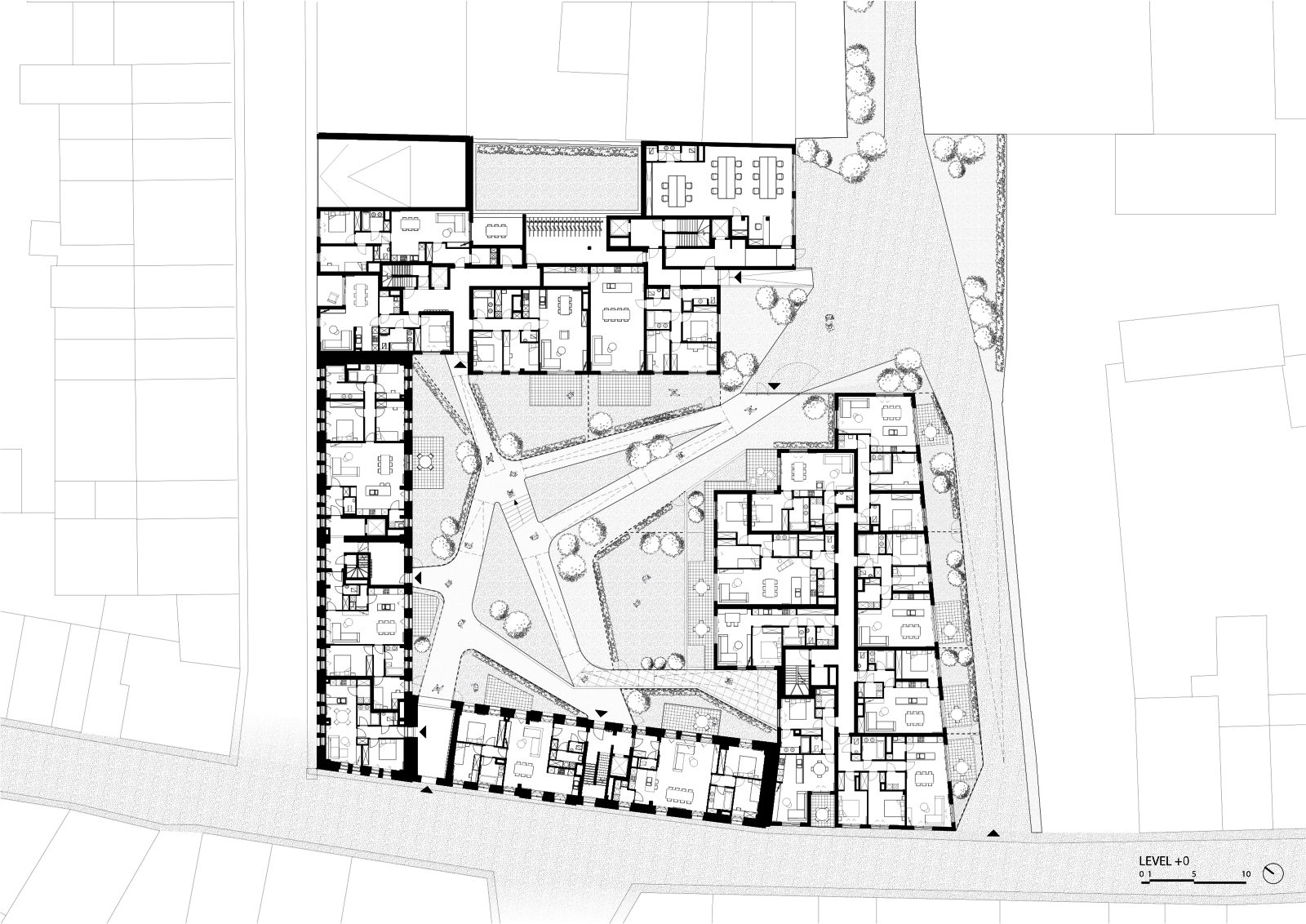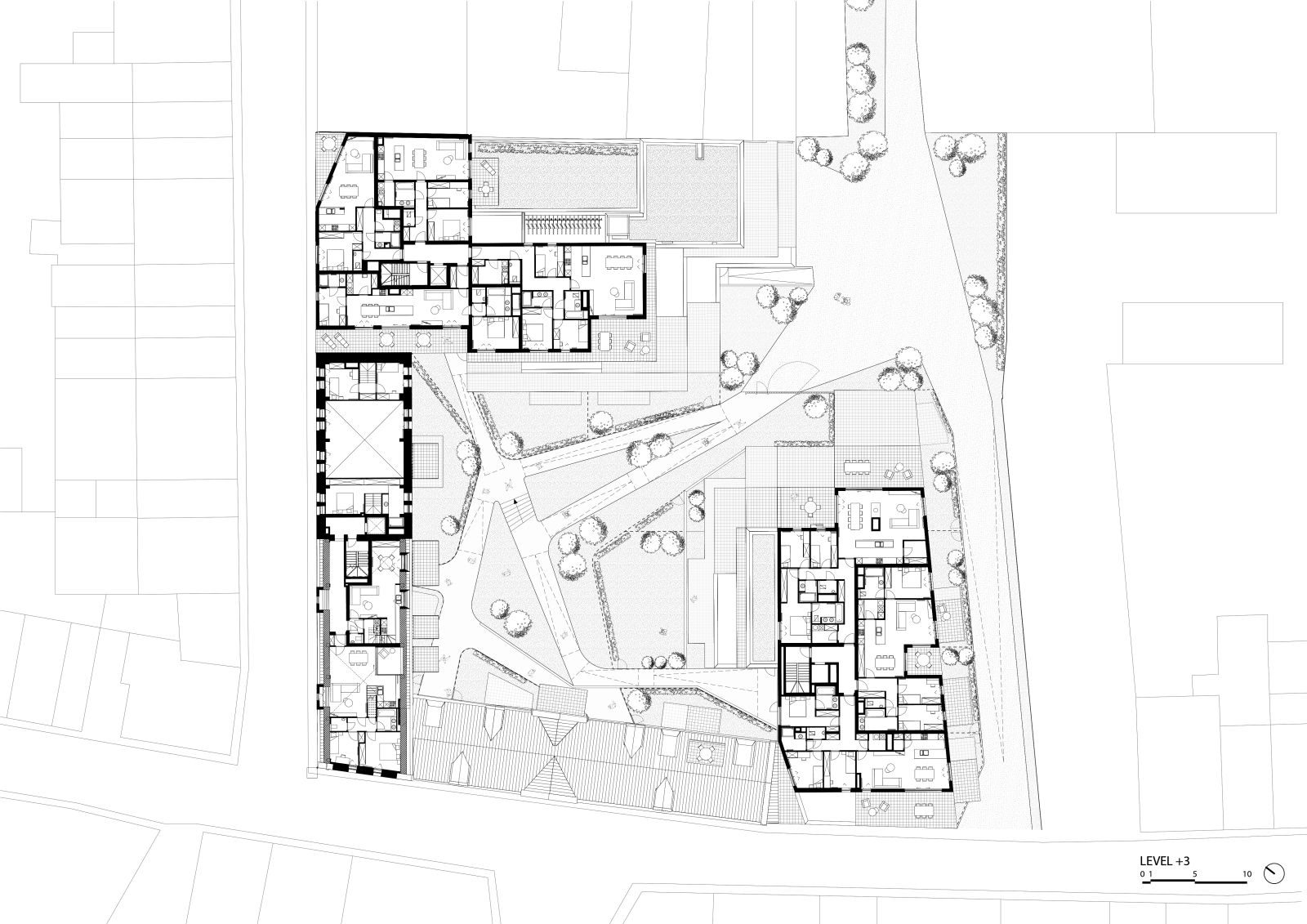Studio Farris Architects has announced the completion of a new residential project in Zottegem, Belgium, that revitalizes a urban island in the city center, that first suffered from abandonment and then a fire, that severely compromised its most valuable part. ‘Het College’ harmoniously integrates modern design with a historic building, whose character is maintained and enhanced by the new extension.
Developer Vanhout purchased the former OLV Collegium, a 19th century building in the center of Zottegem, Belgium, to design a masterplan for a new residential project and a public underground parking area. Studio Farris Architects’ vision for ‘Het College’ was to regenerate the area through reconnection with the city center and revealing, via a contemporary intervention, the inherent beauty of the old school built in 1862 whose masonry work, only partially preserved after the fire that affected the building in 2012, now sets a rustic backdrop to the contemporary addition.

The project includes a cluster of buildings forming a large green courtyard around the former collegium, providing 65 apartments spread among the historical building and the new extension. The building of the former collegium has been substantially reconstructed after the fire. The original identity of the construction has been respected on the sides facing the streets, while towards the inner part of the block, the building expresses greater complexity.
A range of terraces, formed by a series of steps, creates beautiful views of the city and a sense of livability. The location of the site was strategic, establishing relationships to areas which were abandoned or in need of reconnection to the urban fabric. The project acts as a connection between two sides of the city and provides access to new public parking.

The residential area was given a more intimate character to allow inhabitants to enjoy the synergy between the old and the new within a serene living atmosphere. ‘Het College’ ultimately provides for the community by fostering civic pride and strengthening the sense of belonging. The sustainability of the project goes beyond technological solutions.
Environmental qualities were enhanced by making the site more open and green. Additionally, the project highlights the importance of harvesting natural resources, such as rainwater, to be reused for maintaining other parts of the building. The architecture of ‘Het College’ is well integrated into the surrounding context and promotes connectivity in terms of pedestrian movement through its multiple entrances.

It also supports the natural ecosystem of the site. By deliberately removing bricks from the existing facade, small gaps were created that allow birds to pass through; the configuration of the urban block also provides protection from adverse weather conditions and a safe place for them to build their nests. The project is located behind the commercial road of Zottegem and the main access point is situated along a shopping street.
The link to the site was developed through the creation of a pedestrian walkway that connects the commercial street to the new residential complex while also giving access to the new public parking. The pedestrian path starts from a gated building along the shopping street and continues through a pedestrian path activated by offices on the ground floor.

On the opposite side of the commercial road, a historic building is utilized as the accesses point to the residential complex through an existing arched opening that creates a direct connection with the new green courtyard. The various entrances to the apartments are organized around the courtyard which functions as a meeting place as well as a passageway for crossing the city.
The masterplan introduces a pleasant slow promenade in the dense center of Zottegem, from where the valuable historical buildings are made visible again, not only to the residents of the 66 apartments, but to the whole city. The configuration of the extension of the neo gothic building makes it possible to centralize access to the apartments and guarantee a green space for the recovery of rainwater to be reused in the buildings.

The extension was created with volumes that cascade outwards. This allows for the penetration of sunlight throughout the day. Furthermore, thanks to the pixelation of the new buildings, it was possible to create different typologies of apartments in terms of size, layout, and various types of terraces.
The architecture that is visible from the courtyard reconciles the old and the new, creating the feeling of serenity, protection, and openness that can be comparable to a monastery courtyard. The architecture that is visible from the street relates to the existing buildings in a seamless way, creating continuity and freshness in relation to the surrounding context. Source by Studio Farris Architects.

- Location: Zottegem, Belgium
- Architect: Studio Farris Architects
- Consultants Structural engineer: Establis
- Technical engineer: Enerdo
- Main contractor: Vanhout
- Foundation: Van Rooy FBT and Smet-F&C
- Facade Bricks: Viaene Renovatie
- Facade plaster: T. De Neef
- Wooden roof with slates: Schrijnwerkerij Mincke
- Client: Vanhout Projects
- Surface area of the plot: 4.990 square meters
- Total built area: 16.100 square meters
- Construction: November 2021
- Landscape completion: September 2022
- Photographs: Martino Pietropoli, Courtesy of Cultivar







